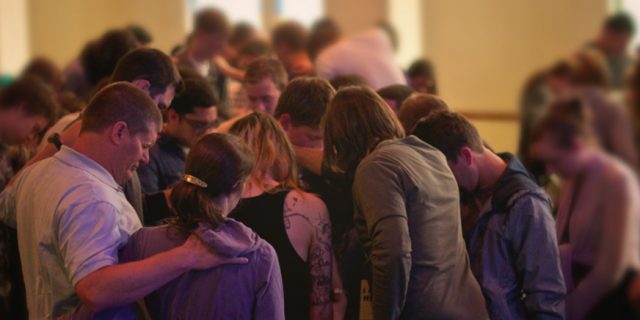Among all the changes going on in modern American churches—music, dress and organization to name a few—one thing is beginning to stand out. Today’s congregations value authentic spiritual experience more than anything else. And after the last few decades of the rotating buffet line of church programming, it’s a relief to see people and pastors starting to pay attention to what matters most. If you can’t come to church for a real encounter with God, why come at all?
A friend of mine, a nominal believer, brought the point home to me earlier this week. He took several days off and went by himself to New York City to take in the sights, tour a few museums, see a Broadway show and in general just hang out. The week before he left I suggested he add one more thing to his agenda. Since he was going to be in the city over a Sunday, he might attend worship services at The Brookland Tabernacle, one of the premier churches in America.
I didn’t think much more about our conversation until last Sunday, when just before our own service began my friend sent me a text message including two pictures of him sitting inside Brookland Tabernacle. I was shocked that he had made time to attend a church at all; but I was excited that he had made his way to a church that, in my estimation, connects better with people of all ages, races and backgrounds than any other.
We talked later that afternoon and the service had been everything for him I hoped it would be. The music was extraordinary—for anyone who’s heard the Brookland Tabernacle choir, you know that no one, and I mean no one, sings like they do. Sure, the musicianship is extraordinary and the music itself speaks to your soul like nothing else. But beyond that, there’s an indefinable something, a whisper of the Holy Spirit. My friend sensed all that. He went on to describe the way the congregation was by far the most diverse he’d ever seen, with people literally from all over the world filling the place to capacity and fully engaged in worship. The sermon, he said, was so moving that it brought the congregation to its feet.
But I already knew all that. It’s what he said next that was so intriguing. At the end of the service, Pastor Jim Cymbala instructed everyone to stand, reach out and hold the hand of the person sitting next to them. My friend saw to his left an older black gentleman from South Africa and to his right a young black man from Guinea. The three of them took each other’s hands. Then when Cymbala told everyone to pray out loud for the person whose hands they were holding, the whole place echoed with the sound of people praying. My friend didn’t tell me, but my hunch is he added his voice to the rest. I wouldn’t have thought in my wildest dreams that he would be in a worship service like he was describing.
Finally, the pastor told everyone to hug the people on either side before leaving. So, again, my friend stepped way outside his comfort zone and embraced the two brothers on either side.
He told me in our conversation that no other church service he had ever attended came close to what he went through. He went on to explain why, and it wasn’t what I expected. More than the music, the energy, the sermon, what he connected with was the authentic expression of faith he had as he held the hands, prayed for and was in turn prayed for himself, with two men who had been strangers but now were connected through their shared time of worship.
As I listened to him talk, I couldn’t help but to think of my congregation’s worship service that very morning. I’m not comparing the two churches—only saying that the same dynamic is at work. We’re also finding the power of the real thing.
For us, the moment happened just before I was supposed to preach. The congregation had sung a song that brought us to the point of a fresh movement of the Holy Spirit, so we stepped outside our normal routine and stopped the service in its tracks to wait and see how the Lord might want to touch people individually. When I invited people forward who wanted prayer, more came than I would have thought. At the first service they filled the front and almost as many responded at the second service. Our volunteer prayer ministers, when they saw the number of people in front, joined them and began moving through the crowd, touching them on the shoulder, hugging some, kneeling alongside of others. As the music continued playing I prayed over the whole church—those in need, those who stood alongside them in faith, and the many others who hadn’t left their seats.
We lingered in that posture of prayer until we sensed it was completed then went on with the service. I don’t know what you call times like this—divine interruptions, spontaneous prayer, intercessory ministry or charismatic experiences—what I do know is how hungry people are for them. All of us, pastors and congregations alike. Church doesn’t have to be rote, contrived, manipulative or pragmatic. It can actually be a place where we encounter the living God and receive the life he wants to give us.
I think that’s what my friend found out. I know it’s what we’re discovering at our church. My hunch is that many other people and congregations are searching for the same thing.
